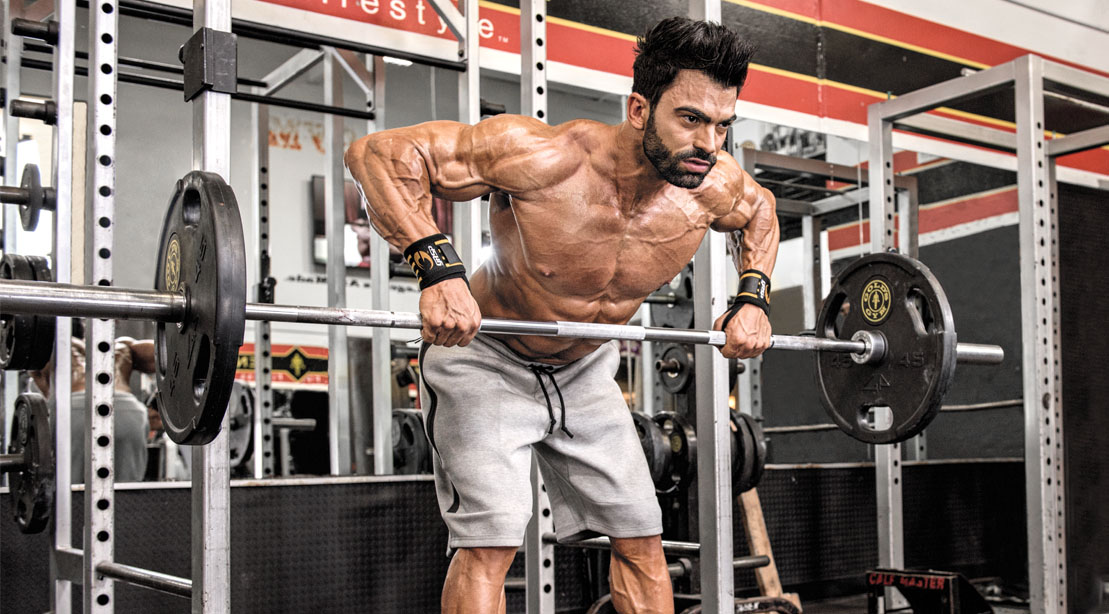28-Days-to-Lean Meal Plan
With the right plan and the right discipline, you can get seriously shredded in just 28 days.
Read article
There’s no question that the basics of strength training work despite what you may see from time to time on the Internet. The barbell is the ultimate tool for strength and muscle and will continue to work for all who take it seriously. Incorporating the Big 3exercises—the barbell squat, bench and deadlift—along with Olympic lifts should form the backbone of most conditioning and strength workouts. But within these squat, hinge, and press variations are forgotten strength exercises and variations done by old-school strongmen to get even stronger.
You’re saying you have no interest in powerlifting or improving your strength numbers? If you’re looking to add muscle or just to get stronger than you were yesterday, then these five forgotten strength exercises will still benefit your training by helping set the table for building a stronger base for your everyday life in and out of the weightroom.
These moves may appear a bit unusual at first and may garner some strange looks, but if you’re looking for accessory exercises to bust through lifting plateaus, give these five exercises a shot. You may be pleasantly surprised.
When you’re looking to shore up weakness in your primary moves, or for variety in your accessory training, give one of these five forgotten strength exercises a shot.
The bent press is a unilateral pressing variation made famous by strength pioneers Eugen Sandow, Arthur Saxon, and Louis Cyr in the 19th century. This exercise trains your body to handle heavy weights overhead. Think of it as a standing Turkish get-up on steroids.
How to do it
*Note: This can be performed with a variety of equipment, including dumbbells and kettlebells (shown here).
How it helps: The bent press improves thoracic mobility and shoulder strength, which has a direct carryover to overhead strength and any sport or activity that demands torso rotation.
Sets & Reps: Three to five sets of 3 to 5 reps on each side early in your training.
This exercise got its name from the lifter who first used them, powerlifting champion Kirk Karwoski. He and his coach Marty Gallagher developed this to improve Kirk’s grip strength, but both soon realized it put slabs of muscle on the upper traps. As a side benefit, it helped crush his deadlift strength numbers.
How to do it:
How it helps: If you want to develop a big yoke, this is the exercise for you. Plus, increasing upper back strength and muscle helps keep the barbell close to you when your deadlift and provides a ‘shelf’ for barbell squats.
Sets & Reps: Perform three to four sets of 8 to 12 reps and the end of an upper body session, or choose a weight around 30-40% of your 1RM deadlift and do AMRAP.
The Pendlay row is named after former coach Glenn Pendlay, who lost his battle with cancer a few years back. Pendlay saw a flaw in the bent-over row, and this was his way of fixing it. He came up with this row variation that starts every repetition from a dead stop to increase maximal back strength and explosiveness in your deadlift.
How to do it:
How it helps: Spending time in the hinge position wonders for your lower back strength and endurance. If deadlifting slowly from the floor is your weakness, the Pendlay row’s explosive nature will help.
Sets & Reps: This row variation is best performed for strength and power, so performing three to five sets of between 4 to 8 reps works well.
When JM Blakey trained at Westside Barbell and was crushing EVERY bench press record in sight, those who trained with him noticed he was performing a lift they had never seen before. It was a hybrid move, part close-grip bench press, part skull crusher, and total triceps builder. And when they did it, they loved it, and the JM Press was born.
How to do it
How it helps: JM presses focus on lockout triceps strength that transfers directly to your bench and overhead press. Due to the shorter ROM, you’ll also go heavier than your usual triceps extension variation.
Sets & Reps: Three to five sets of 4 to 6 reps for strength or two to three sets of 8 to 12 for muscle.
The snatch grip deadlift derives its name from the Olympic lift because it resembles the first part of the snatch movement. The wider grip puts a significant demand on the upper back muscles because they work harder to keep the spine neutral. Plus, this helps improve your grip strength because your hands are away from the shoulders.
How to do it:
How it helps: IMO, you cannot get enough upper back strength for the deadlift or any exercise, and this deadlift variation tests this to the max. This variation puts the hips in a lower position, and more oomph is needed for the initial pull, making it a safer option than deficit deadlifts for some lifters.
Sets & Reps: Perform these if you’re slow off the floor, need to improve your grip strength, or are looking for a little variety. Three to five sets of 3 to 6 reps work well.